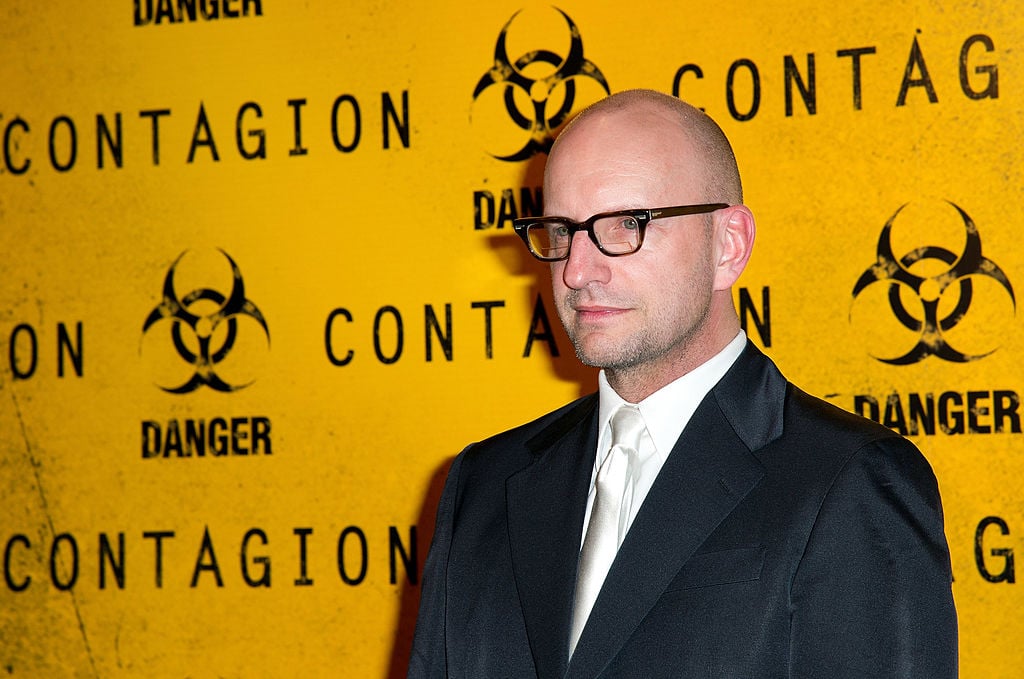‘Contagion’: CDC Experts Weigh In on the Film’s Medical Accuracy
Director Steven Soderbergh’s 2011 drama Contagion has gone absolutely viral in recent days, currently ranking high on iTunes’ Top Movies and on Amazon Prime. The spread of the coronavirus (COVID-19) around the globe has audiences turning to films like Contagion because of their suddenly relatable scenarios.
The film’s popularity nearly a decade after its release presents a new issue: Are viewers taking the film seriously, and just how medically accurate is Contagion? Upon the film’s release in fall 2011, the Centers for Disease Control and Prevention assessed Contagion to judge its realism and the possibility of a similar pandemic happening in real life.
[Spoiler alert: This article contains spoilers for Contagion.]

What happens in ‘Contagion’?
Written by Scott Z. Burns, Contagion revolves around a dangerous pandemic, the mass hysteria it causes, and the desperation of scientists and government officials as they fight to find a cure.
The pandemic begins when Patient Zero — a young woman named Beth Emhoff, played by Gwyneth Paltrow — returns home to Minneapolis from a business trip in Hong Kong. Days after her return, she begins to have a series of violent seizures and dies after being rushed to the hospital.
Meanwhile, the outbreak begins to spread through Minneapolis and Illinois, causing panic. As the CDC works diligently to find a cure, looting and violence are rampant in the streets as desperate people try to survive. A fear-mongering conspiracy theorist and blogger named Alan Krumwiede claims he has found a cure that the government is hiding from the general public, causing more mass hysteria.
By the time scientists discover a cure, the death toll has reached 26 million globally.
The MEV-1 virus depicted in the film cannot exist in real life
In Contagion, MEV-1 is a mix of genetic materials from viruses of pigs and bats, particularly Nipah and influenza. Nipah is a zoonotic virus, meaning it spreads between animals and humans. As shown in Contagion, the disease can cause lethal brain inflammation and acute upper respiratory issues.
While this disastrous disease combination is perfectly plausible in a Hollywood setting, reality would beg to differ. “Influenza and Nipah have incompatible genomes that are not capable of recombination in nature,” the CDC explained to PBS News Hour.
Nipah, itself, is not a virus that has spread widely among humans. There have only been roughly 150 reported cases. The natural hosts of the virus are typically fruit bats, but the virus can spread to other domestic animals as well. CDC virologists explained that Nipah is not consistent with a virus that could cause a global pandemic as seen in Contagion.
The way MEV-1 spreads is plausible
While the disease itself is fictional, the way MEV-1 spreads in Contagion is completely plausible if proper hygiene rules and safety tips are not followed.
At the end of Contagion, a flashback sequence reveals the origin of the disease. A colony of bats is frightened by a bulldozer, and one bat that’s infected with MEV-1 settles in a pigsty, dropping a piece of fruit that is soon consumed by one of the pigs. The pig is taken for slaughter and prepared by a chef, who handles the meat without gloves and is never seen washing his hands. Afterward, the chef meets and shakes hands with Beth, transferring the virus to her and sparking the outbreak. The initial outbreak only takes days to become a disastrous pandemic.
“Contact with bats (or contact with intermediate animal hosts that acquired infection from bats) is a common theme among some recent emerging human infections,” the CDC explained.
Bats and pigs are both real-life culprits when it comes to spreading diseases to humans. Bats are especially dangerous hosts for disease because they can carry an illness without displaying or experiencing any symptoms.
The speed at which the virus spreads is also entirely plausible. Through travel and human contact, viruses can spread very quickly. So the situation is completely possible and has, in fact, taken place twice in recent years, according to the CDC. The 2003 Severe Acute Respiratory Syndrome (SARS) outbreak spread to 13 countries on three different continents in less than a month. In 2009, the H1N1 virus became a global pandemic within a few weeks.
Creating a vaccine takes longer than ‘Contagion’ implies
Contagion takes place over the course of several months. During this time, it takes scientists from the CDC roughly four months to find a cure for MEV-1. In real life, the CDC reports that developing a vaccine for an entirely new virus would take much longer.
Every year, influenza vaccinations take at least four to six months to create. But to develop a vaccine for a brand new virus, the process would take a lot more time. From tracing the source of the virus to formulating and testing the vaccine, the process would take a considerable amount of time and work.
While Contagion is a terrifying portrayal of what could happen during a global pandemic, the facts and scenarios presented in the film should be taken with a grain of salt. Even though the filmmakers strived to make the film as medically realistic as possible, the film is not an entirely accurate representation of how diseases form and spread. Instead, Contagion is a cautionary tale, revealing how fear and mass hysteria can be much more dangerous and threatening to society than a pandemic.
Read more: Under Quarantine: 4 of the Most Realistic Movies About Pandemics


